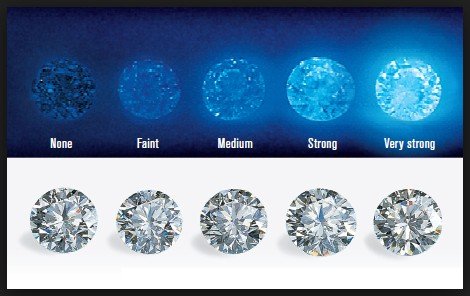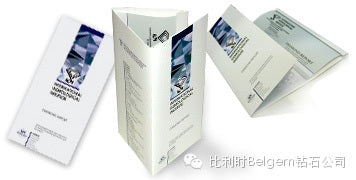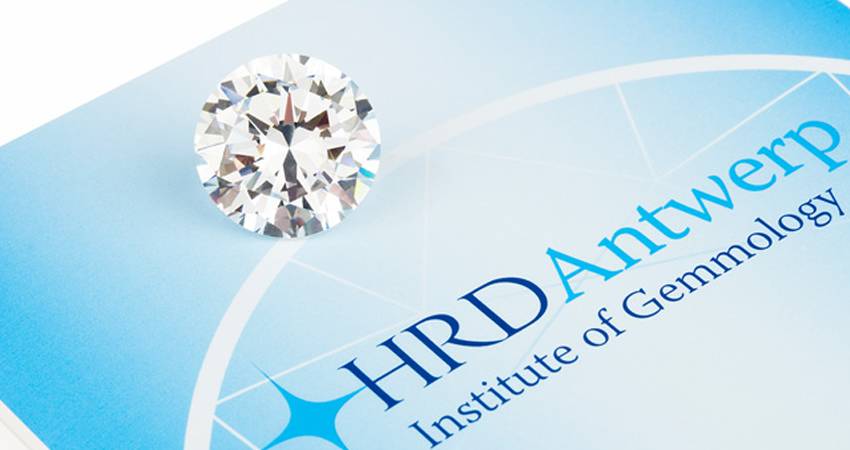Fluorescence refers to a diamond's ability to emit a visible glow—typically blue—when exposed to ultraviolet (UV) light. Approximately one-third of natural diamonds exhibit some degree of fluorescence. Under UV light, these diamonds can show varying intensities and hues of fluorescence.
The Gemological Institute of America (GIA) classifies fluorescence into five levels:
None, Faint, Medium, Strong, and Very Strong.
Fluorescence in diamonds primarily affects two aspects:
-
Fire and Transparency – Stronger fluorescence may cause a diamond to appear slightly hazy or less transparent under certain lighting conditions.
-
Apparent Color – In some cases, fluorescence can make diamonds, particularly those in the H-color range or lower, appear whiter or brighter to the naked eye.
It's important to note that fluorescence does not mean the diamond itself is blue. Diamond color grading is based on the presence of yellow or brown tints in normal lighting, not on fluorescence color under UV light.
Generally speaking, fluorescence has little to no impact on a diamond’s wearability. In fact, recent academic studies suggest that fluorescence can have positive effects, making lower-color diamonds appear whiter under everyday lighting conditions. This optical benefit can enhance visual appeal while also offering better value for budget-conscious buyers.





